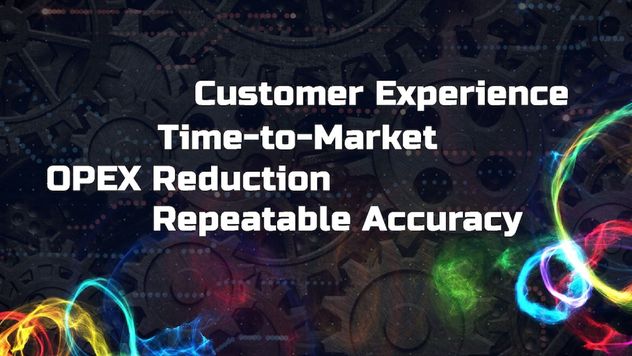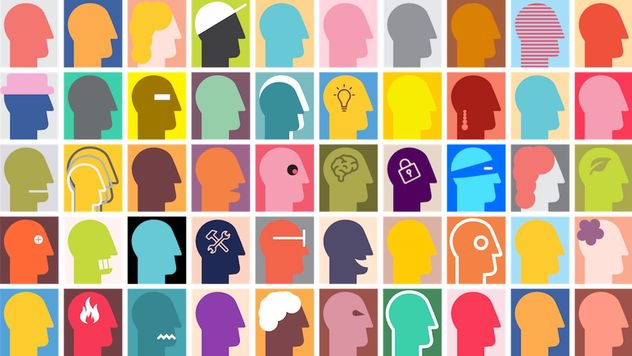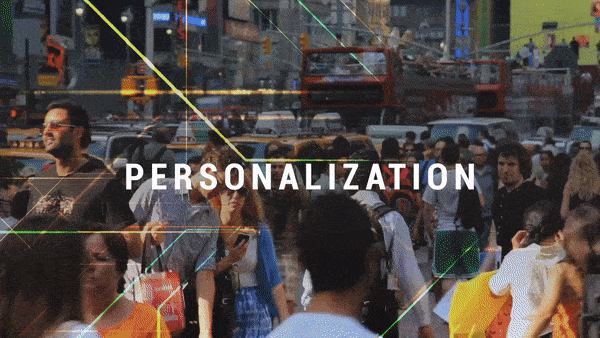
The challenge with the customer experience is that it is ever-evolving, and all too often we are seeing the seemingly infinite demands of the customers met with the finite limitations of people. So how can brands meet these demands? When you take into account Gartner’s statement that “By 2020, customers will manage 85% of their relationship with the enterprise without interacting with a human,” the answer becomes simple – technology. And there are none that exist that are so perfectly poised to improve nearly every facet of the customer experience like artificial intelligence.
So how is AI changing the landscape of the customer experience? Simple, it is empowering more personalized, self-serve, and scalable experiences.
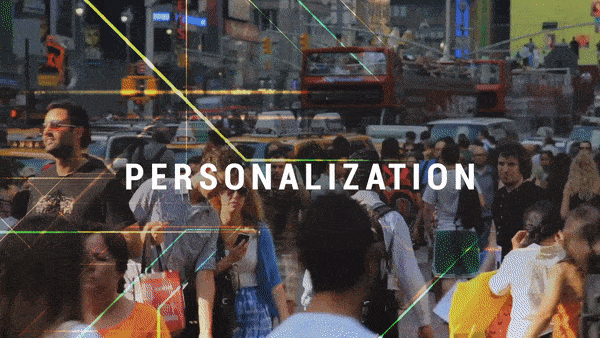
Shopping Experiences
Have you ever gone to a restaurant where the food was so-so, but the service was unparalleled? The type of place where you are always greeted by name when you walk in; they know what table you liked to sit at, and usually have your drinks on the table shortly after sitting down. It is this familiarity and personal touch that keeps people coming back, and it is this same feeling that is driving customers to specific brands. The only difference is that it is AI powering this experience rather than a waitress.
In our lifetimes, each of us will generate thousands of gigabytes of data, which seems impressive; however, it is only valuable if analyzed. Sadly, this is where our human limitations come in, along with our ingenuity, since just because we can’t actually do it, doesn’t mean it can’t be done. AI and machine learning are being used to comb through big data to provide the customer with an unrivalled level of personalization. This includes product recommendations based on previous purchases to websites changing their appearance in real-time to adapt to a customers browsing habits – even going as granular as adjusting to their reading level. When AI-powered personalization is implemented, not only is the customer experience improved but so is the conversion to purchase, driving new and repeat business.
Behaviour Prediction through Artificial Intelligence
Human beings are brilliant, mainly in part to our brains, which is the most complex structure in the known universe. With it, we cannot only absorb the information around us, but for the most part, we can take that information and process it, put it in context, and use it to realize patterns and make predictions. This has proven incredibly useful not only in our survival as species but in business, as the ability to predict what the customer wants and will do next can often mean the difference between success and failure. It is here again, however, we find ourselves faced with our limitations, as the ability to analyze, process, establish patterns and make customer predictions at the scale that modern business demands are simply an impossibility. Fortunately, what we can’t, AI can.
The only thing better than giving the customer what they want is being able to predict that want before it is expressed, and AI can do just that. Analyzing behavioural patterns, trends in the market, and user experience across multiple channels through Artificial Intelligence can lead to not only accurate predictions, but instills a feeling of value and of being understood by the brand, all of which help to develop loyalty and retention, as well as being a natural pathway to upselling and cross-selling.
Product Discovery
Few would argue that the most desired action a customer can take is to make a purchase; after all, sales are the driving force of business. Still, there is a lot that goes on before that action can take place, and looking at it from a logical perspective, the next most crucial step to making a purchase is discovering what exactly you want to purchase – sometimes without even knowing you want it.
Does this sound familiar: you walk into a store “just to browse,” however, after an interaction with a skilled sales associate, you end up walking out with a bag full of things you didn’t know you wanted but are ultimately happy you purchased? Well, replace that sales associate with AI, and you’ll get a pretty good sense of the capabilities of this technology. AI can hone in on the wants and needs of the customer by analyzing their previous purchases and search history, and make recommendations accordingly. With time and relevance being perhaps the hottest commodities in the life of the consumer, AI-powered product discovery can not only streamline the process and lead to upsells and cross-sells, but also garners goodwill with the customer who now only sees products and services that have been predetermined to be relevant to them.
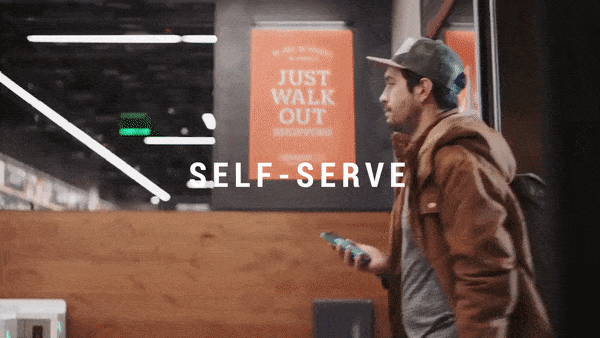
The New Standard
When discussing the notion of customer experience, the conversation should always begin and end with the preferences of the customer. There was a time not long ago when these preferences included a very hands-on approach from brands and their representatives, whether it was in product discovery, sales assistance, or customer service. However, today, we have seen a dramatic shift, one that considers the customer opting for a more self-service experience – an experience ultimately powered by AI.
There is a growing belief that a phone call is not the best way to resolve a customer service issue – and I’d have to agree. That, of course, isn’t to say customers don’t still have issues; instead, these new, tech-savvy generations prefer to solve their own problems, turning to online forums, FAQs, chat, and bot services. To adapt, brands need to recognize this new, self-reliant customer and offer them a human-free, digital-only experience. Failure to do so will not only result in a negative CX but will invariably impact the businesses bottom line.
Rise of Chatbots
The goal of every brand should be to try and provide value to their customers through the experiences they have with them. However, this poses a problem with humans limited capabilities and customers seemly limitless demands. One solution to this problem, if you couldn’t have guessed by now, is AI, more specifically, the use of AI-based chatbots to act as assistants to your customers.
First of all, chatbots inherently enhance the customer experience through their timelines and efficiency. Natural Language Processing (NLP) allows chatbots to understand customer questions and respond to them with precise answers, all without having to dial-in to a call centre or wait in a queue. Not only that, but they can also make personalized recommendations in real-time based on historical data. Finally, chatbots ensure a consistent level of service, a fact that cannot be guaranteed when you have a human being on the end of the line or chat.
Customer Service Roles
It is truly awe-inspiring to imagine all the capabilities of AI and how much it can do for us, especially in the world of business. However, that should never wholly discount the roles humans play in the customer experience, more specifically, customer service. Today, we see these roles have evolved, but they most certainly have not been eliminated.
The use of AI in customer service is gaining prevalence, specifically, with AI-based chatbots and virtual assistants that result in an automated, fast, and ultimately hassle-free experience when it comes to lower tiers of service issues. This has not only proven profitable and more efficient for an enterprise but also tailors to the preferences of the customer who demand immediate solutions. As a result and despite people’s fears, the consensus is not seeing the elimination of customer service representative jobs, rather, their evolution, one that is seeing them handle more complicated, difficult, and comprehensive support issues, giving the customer more time and attention if that is what they want, or their issue deserves. Ultimately, delegating more straightforward tasks to AI means premium human customer support can handle the more valuable and elaborate matters; ensuring the customer experience is a pleasant one.
Customer Touchpoints
A customer touchpoint is any point of contact between a brand and a customer where they engage to exchange information, provide a service, or handle a transaction. While this definition seems pretty straightforward, it starts to become a little complicated when you account for our modern marketplace that sees an ever-increasing amount of ways for brands to interact with their customers. However, this is where AI really shines, for the implementation of AI can help lead to a unified experience, regardless of the touchpoint chosen by the customer.
Thanks to AI, whether a customer has an issue at 2pm or 2am; if they are reaching out from their cell-phone or desktop, or whether they are located in Toronto or Munich, the ability to provide a seamless and holistic experience for them is within the grasp of enterprises.
Continued Learning
Among the many advantages of AI is the fact that it is always on. It is on to assist customers in their product discovery, it is there to help them make a purchase, and it is present if and when an issue arises that requires brand support. However, as a complementary feature of always being on, by nature, that also means that AI is continuously learning, improving, and making itself better, which in turn, facilities a better customer experience.
With AI in place, from the moment a customer, potential or current, logs on to your site, browses your catalogue or interacts with your app, it is watching, learning, and recording what happens. As a result, the next time a customer logs on, things will look different, more personalized, more specific to that unique customer. This allows for more concise and targeted marketing efforts which save time and money on the brand side and exponentially increase the customer experience by only providing tailored and relevant information.

Inventory Management
One of the fastest ways to hinder your customer experience is through poor inventory management. Can you imagine the frustration of going through all the effort of finding what you are looking for – and even after it is clearly displayed – you discover that your choices are out of stock?
Inventory management, interestingly enough, exists on a single contradiction – keeping enough stock to ensure orders are met and business keeps moving, but not enough that it impacts cash reserves. This is where AI comes in to automatically monitor the stock, uses machine learning to analyze bulk data and forecast demand within the supply chain, and in some cases, even implement robotic automation in the procurement process. After all, the key to a happy customer and a superlative CX rests in the ability of the customer to get what they want when they want it.
Cost Effective
The aim of every business is to ultimately build and expand; however, doing so is not without its cost. For a company to successfully grow, they must have an infrastructure in place that can handle the increasing volume of sales, inventory management, and customer service issues. Typically, that would require the hiring of more staff; that is unless you have the power of AI in your corner.
AI empowers businesses to scale up their customer service at the push of a button (or several, but you get the idea). Imagine, you launch a new product, and at the same time, you release a new and interactive FAQs that can solve thousands of customer concerns. Then you switch one server to another and now have a mighty fleet of chatbots who are ready to respond to the onslaught of customer inquiries instantaneously. Couple this with the ability of AI to continuously learn and you can now easily branch out into new geographic markets, no longer encumbered by language barriers. And the best part – you only have to train them once.
By now it should be clear that technology such as AI has already begun to revolutionize and change the landscape of the customer experience – as it should. Customers today are by no means the same customers of yesterday, and as such, the same level of attention, service, and accommodation is just not on par. The truth of the matter is that customer demand is ever-increasing; which is all the more reason for AI to fulfill those needs.
The future isn’t about AI replacing humans; instead, it is about AI empowering humans to do more, and the sooner you realize it, the happier your customers will be.
